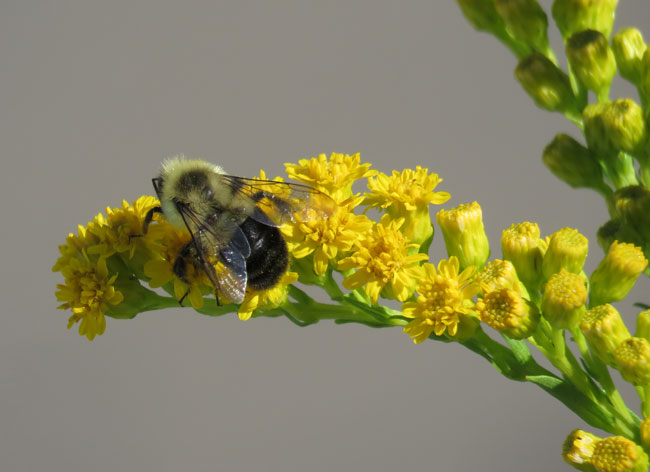
This is my second annual Walktober post with Robin over at breezes at dawn. If you would like to, click the link to learn more about it and perhaps join us. Everyone is welcome! 🍂

For our walk I decided to visit a place my Birding in Connecticut book suggested. We had never been to Waterford Beach Park before. There was a long path through a wooded area and then through a salt marsh and then over a dune to get to the beach. And then we had a pleasant walk up and down the scenic beach on Long Island Sound, although the sand flies were pretty bad that day. It was also unseasonably warm. A few people were arriving with beach chairs as we were leaving.

Great blue herons stay here for the winter. I thought great egrets flew south but apparently during mild years they stay as far north as Massachusetts. The summer ones in Groton are gone, maybe they come over here for the winter. 🙂 Or maybe the warm weather has merely postponed their departure. Tim noticed the interspecies friendship moment in the picture below.

(taken from the John A. Scillieri, Jr. Overlook Wetlands path)
Waterford Beach Park offers nearly 1/4 mile long stretch of sandy beach and an extensive tidal marsh. Visitors have the rare opportunity to experience an unmodified natural beach with outstanding views of Long Island Sound.
~ Town of Waterford website


I come into the presence of still water.
And I feel above me the day-blind stars
waiting with their light.
~ Wendell Berry
(The Peace of Wild Things)


The beach views took our breaths away! A friendly town employee greeted us and when we told him we had never been there before he kindly filled us in on all sorts of events held there. A summer pass is quite expensive though, so I suspect all our visits will be off-season when there is no entrance fee.

Since we started looking for nature walks when the pandemic began we still keep finding “new” places near home that we’ve never been to before. It’s a good thing, though, since our health problems keep us from traveling too far away from our nest.


We spent quite a bit of time watching the gulls at the west end of the beach. They were having a feast. I can’t figure out if they are juvenile herring gulls or juvenile great black-backed gulls. And I don’t know what kind of creature they were eating inside those shells.







As we headed back through the marsh we could see out past Alewife Cove to the lighthouse we usually see from our beach. From our beach it has nothing but the water of Long Island Sound behind it. I’m not sure what the land mass is behind it from this vantage point. I’m going to try to find a map to study…

It looks like our fall colors are arriving later this year. We’ve been avoiding the woods because of the mosquitoes, of which we’ve had a bumper crop. I didn’t appreciate it at the time but last year’s drought kept the mosquitoes away and made all those autumn walks in the woods possible. May a first frost arrive here soon!
Thank you, Robin, for hosting Walktober! 🍂












































































































